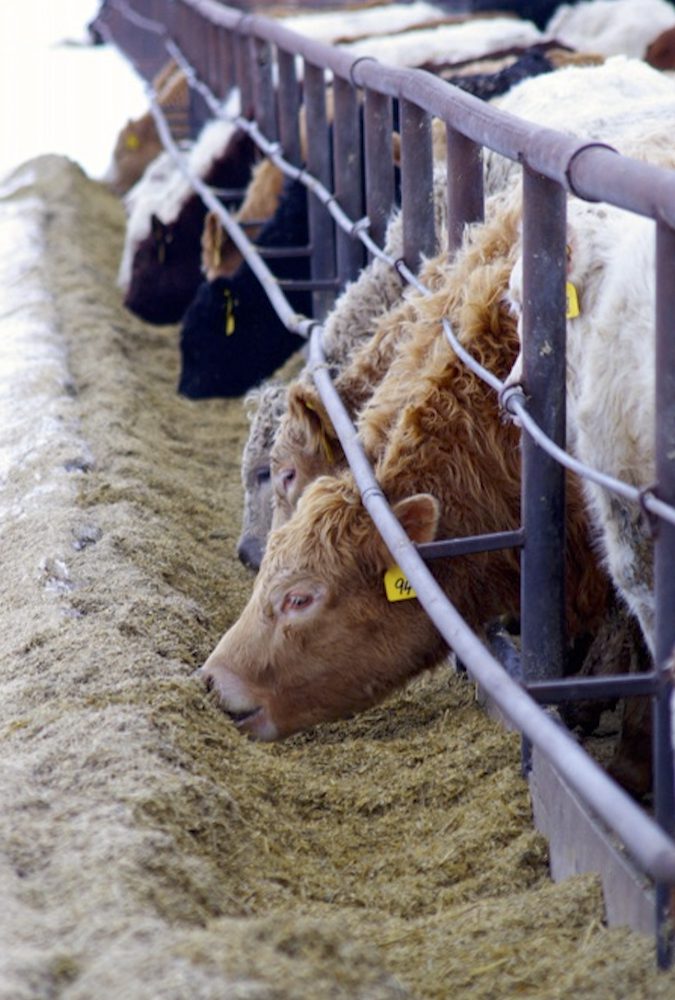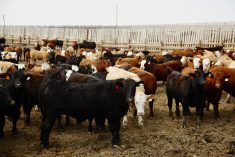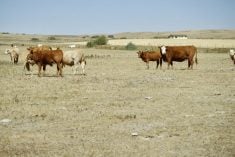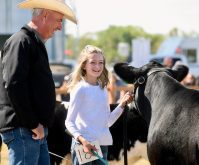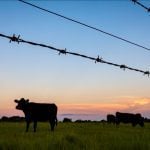Fed cattle
The fed cattle market has struggled since peaking in September. Lower fed cattle futures, lacklustre beef demand, increased beef imports and larger carcass weights contributed to lower prices in early December.
The cash market was trading $8.74/cwt under the September high with a lift time of four to seven weeks. The fed cattle average in Alberta in early December was $224.96/cwt. While lower than the last several weeks, that average is $39.43/cwt higher than the same week last year and $66.52/cwt higher than the five-year average.
Read Also
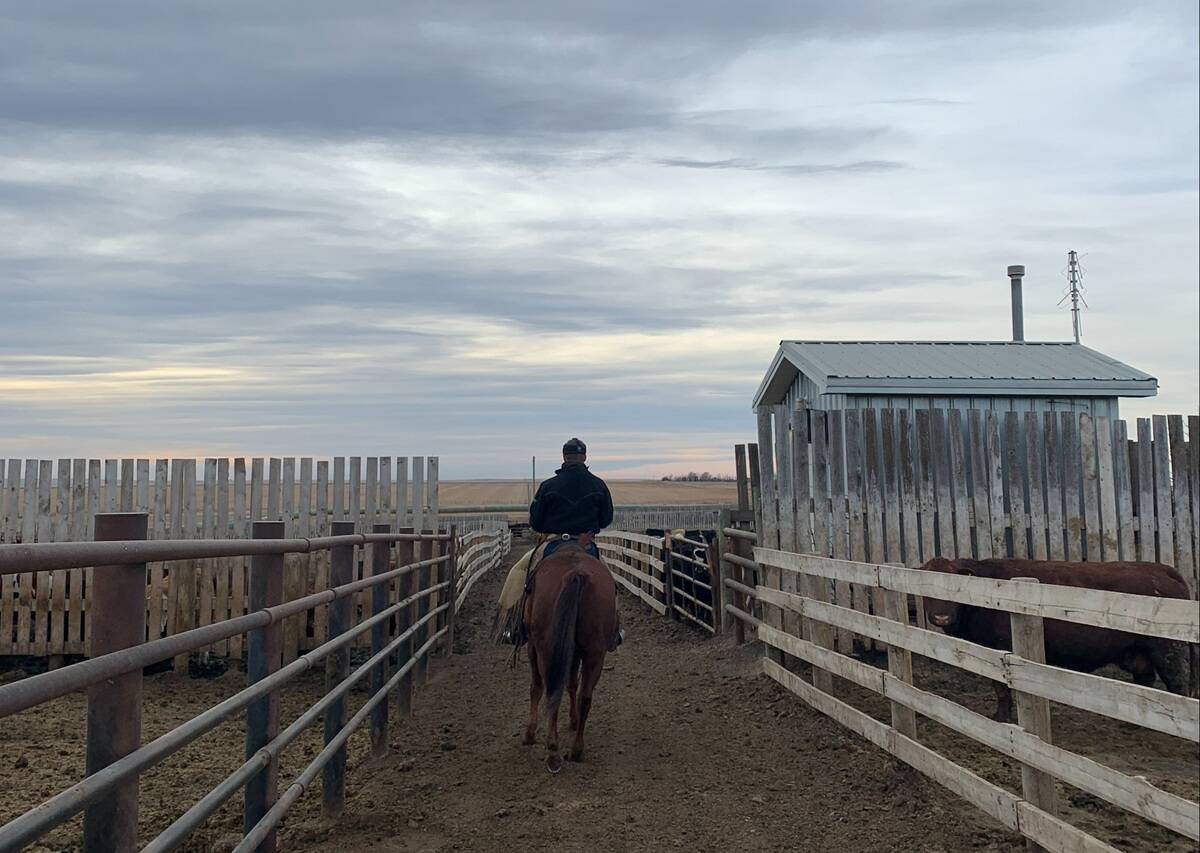
Pen riders still better than tech at detecting respiratory disease in feedlot cattle, says researcher
Recent research found that pen riders are better than tech at flagging signs of BRD in feedlot cattle
While the fed cattle supply has tightened, consumer demand and buyer interest didn’t improve as expected. Lower bids and passed offerings added days on feed that, coupled with the mild winter, increased carcass weights. The average fed steer carcass weight in Canada is 972 lbs. which is 16 lbs. heavier than the last week of November. Carcass weights are 10 lbs. heavier than a year ago and when looking at the cumulative average, 2023 is running six lbs. heavier than 2022.
Fed cattle slaughter in Canada is smaller than last year, further confirming the reduced numbers in the North American beef herd. In early December, fed steer slaughter was down eight per cent in 2023 at 1,534,993 head and heifer kill was four per cent below last year at 900,390 head. Fed cattle exports, including cows, to November 25 were up one per cent to 450,177 head. Boxed beef imports from January to September are 12 per cent larger than a year ago as well.
Deb’s outlook on fed cattle: Typically fed cattle prices improve at year’s end in response to beef demand for holiday parties and seasonal tightening of front-end supply. But inflation has affected consumer spending, so the market will likely struggle to improve. Longer lift times and lower packer bids risk feedlot currentness and leverage. As consumers struggle with cost-of-living increases and higher interest rates, monitor changes in spending habits and the effects on the beef market. Market pressure will likely remain until we see some seasonal strength moving through the first quarter of 2024.
Feeder cattle
Feeder prices held through the fall. While all classes are off from the annual highs in September, the drop through the fall run has not been as extreme as in recent years. Fed prices have struggled and feeder futures come under pressure, but lower feed grain prices and tight feeder supply trumped the negatives and supported the market.
As auction market numbers slow for the year, 550-lb. feeder steers are down $20.21/cwt from the September high, averaging $381.58/cwt as of December 8, which is $109.95/cwt higher than early December 2022. Heifer calves still trade more than $50/cwt back from the steers, averaging $330.31/cwt.
Heavier feeder cattle traded mostly sideways in November and early December as buyers looked for cattle to finish in the stronger spring market. In Alberta, 850-lb. feeder steers averaged $301.50/cwt at the start of December, which is $27.70/cwt back from the September highs but still over $70/cwt higher than last year. The struggling feeder futures market is evident when looking at the 850-lb. cash-to-futures trend. At $15.72/cwt on December 8, the basis improved $30/cwt from the previous four weeks.
Canada remained a net importer of feeder cattle in 2023. Feeder exports to the U.S. are still down 13 per cent when compared to a year ago, totalling 164,042 head.
Deb’s outlook on feeder cattle: At press time, regular feeder sales were wrapping and sale volumes and lot sizes shrinking as we neared the year’s end. Local prices were trading at a premium to the U.S. market, which will encourage imports and create a ceiling on feeder prices in the near term. The start of the new year will look much the same as buyers watch fed cattle direction as well as feeder and fed futures markets. However, numbers will remain seasonally small and good-quality feeder cattle will be in demand. Further out into 2024, feeder cattle prices should be well supported as beef cow numbers in North America are down. If weather permits and producers start to retain females, feeder supply will tighten even further.
Non-fed cattle
In early December, cow numbers at auction dwindled. Mild weather increased feed options in some areas. November cow slaughter was large, with cumulative totals in Canada at 459,412 head, eight per cent larger than a year earlier.
The D1,2 cow market has followed a historically normal price pattern through the fall, with the low bottoming out at $157/cwt in November, then climbing again into December. The Alberta D1,2 cow average for December 8 was $129.13/cwt, which is $47.05/cwt higher or a 57 per cent improvement over the same week in 2022.
Bull prices moved lower through the fall run. The early December butcher bull price at $143.56/cwt was $11/cwt lower than early November but still $27.63/cwt higher than the same week in 2022. Bull exports as of late November were down 18 per cent at 32,576 head while domestic bull slaughter was up 27 per cent at 18,640 head.
Deb’s outlook for non-fed cattle: While the trend for stronger prices in the non-fed market in the first quarter should hold, there are a few things that will influence price improvement. The first is consumer spending. Generally, when consumers cut back, they still purchase grinding and trim meats. However, one must monitor any beef spending changes. Also, as fed prices struggle to gain seasonal strength, watch that feedlots remain current in their marketings in the new year. Larger boxed beef imports in 2023 increased the pounds of manufacturing beef in the system, directly affecting Canada’s non-fed market. Finally, captive supplies of cows placed on feed will move in early 2024, adding volume to the tight cow supply.

